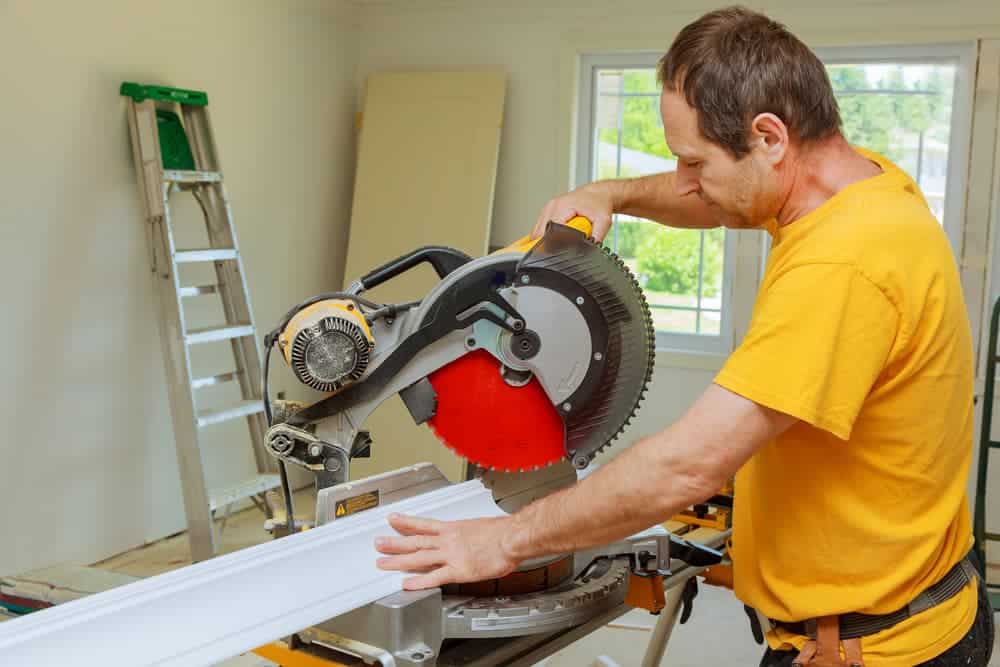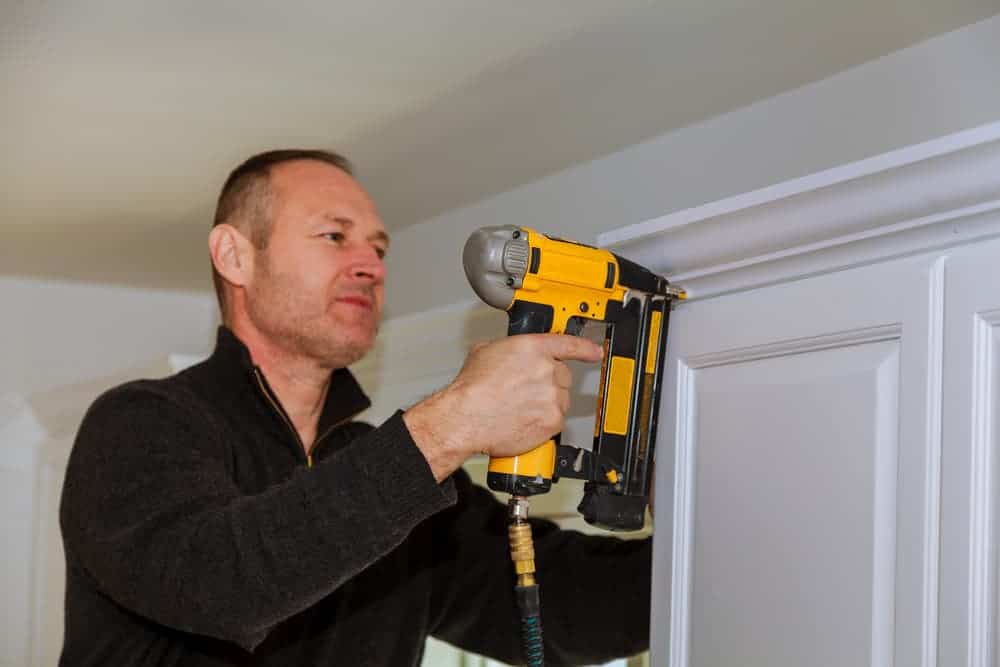Aside from benchtops, wall cabinets are the kitchen’s crowning glory. Having a lot of storage space can easily impress a guest or potential home buyer who walks into this space. To take things up a notch, why not give your pantry cupboards a polished trim on top? Crown moulding installation requires a bit of skill, though. But the right tools and steps make it a doable, not to mention fulfilling, DIY idea.
Tools and Materials
First things first: we have to get our construction materials and carpentry tools ready. Here’s a list for your reference, but keep in mind that these may vary, depending on your kitchen cabinets and preferred installation technique.
| TOOLS | MATERIALS |
| Ladder | One-by-two lumber |
| Safety glasses and gloves | Crown moulding |
| Tape measure and speed square | Wood glue |
| Mitre saw | Wood putty or drywall hole patch |
| Nail gun | Fine-grit sandpaper |
| Angled paintbrush | Primer and interior paint |
| Painter’s tape and sheet plastic |
Before you start with your pantry cupboard upgrades, make sure that safety measures are in place. Use a ladder, not your countertop, to reach the top of your cabinets. The benchtop may be too high and dangerous for this project. Standing on it might result in costly damages, too.
When cutting wood, it’s best to put on your gloves and safety glasses to avoid accidents. Lastly, crown moulding installation involves accurate measurements and a systematic approach. Doing it step by step is one way to guarantee project success. Here’s a guide you can follow.
Step 1: Measure and Cut the Nailing Blocks
If your kitchen cabinets have enough space above their doors, then you can skip this part and proceed to the next step. But most cupboard does not have room to nail and secure the crown moulding. And in that case, you need some filler wood strips around the top portion of your wall cabinet to serve as a base or nailing block.
Use a measuring tape to take the width and depth of your base cabinets. Then total these measurements to determine the amount of one-by-two lumber that you need. Pencil mark the lumber, then cut it to size.

Step 2: Measure and Cut the Crown Moulding
Here, it’s ideal to use the moulding itself for measuring instead of a tape measure. To do this, cut the moulding into pieces that are longer than the actual width and depth of your upper cupboards. Then hold a piece of crown moulding at the top and mark the end. This marking will be your guide when making 45-degree cuts. So, do this for the rest of the crown moulding pieces.
Next, set your mitre saw to a 45-degree angle position and start trimming your mouldings. Keep in mind that the top edge of each corner should be longer than the bottom part. Do the same 45-degree cut for the others.
Step 3: Dry-Fit and Secure Your Trim Pieces
Now that you have all the wood pieces ready, it’s time for the tricky part. The problem with crown moulding installation is that sometimes things don’t line up the way they should. So, the best way around it is to dry-fit your nailing block and mouldings first before grabbing the nail gun.
Start by laying your scrap wood or nailing block at the top of your cabinet and moving it a little to the back. The gap or space here should depend on the thickness of your crown moulding. The purpose of which is to allow the moulding strip to sit at the edge of the cabinet. Once done, use wood glue and the nailing gun to secure your base.
Next, assemble your moulding pieces and hold them together using strips of painter’s tape to keep everything aligned. Then secure the moulding using a nail gun. The force of the nail gun can likely knock out your taped pieces, though. But keep at it and make sure that you’re securing each to the nailing block behind it.
Also, if you are nailing your crown moulding directly to your cabinet, remember to secure it a few centimetres above the cabinet doors.

Step 4: Prime and Paint
Once all pieces of crown moulding are secure, you can now remove the painter’s tape that’s keeping them together. When you inspect your handiwork, you’ll see nail holes and tiny gaps where the corners meet. Fill these up with some wood putty or drywall hole patch. Then smooth out the surface by sanding it with fine-grit paper. Afterwards, wipe them down with a clean damp rag to remove debris and dust. Let the surface dry before painting.
Meanwhile, prep the area by covering your kitchen cabinets and countertop with sheet plastic. Use painter’s tape to secure your cover. You can get more painting tips from this article. If you’ve chosen a pre-primed crown moulding, you can begin covering it with two coats of paint. Otherwise, apply two coats of primer first before painting.
Remember to let the first coat of paint cure for several hours before painting the second layer. Also, the choice of paint is up to you. Homeowners often prefer the classic styles and make the crown moulding match their cabinet finish. However, you can also experiment and use contrasting paint colours to make the trim stand out.
More Tips on Crown Moulding Installation
- Use an electric nail gun for this project. This valuable tool can reach low soffit spots and shoot thin nails to avoid splitting your wood strips.
- Choose softwood for your nailing block. Wood materials like fir, spruce and pine have straight and smooth ends. This way, you won’t have to worry about furred, rough edges.
- Run a thin strip of wood glue between the moulding and nailing block. You can do this extra step after securing all pieces. Just make sure not to let excess glue drip down to your cabinet.
- Use sealant and paint to fix flawed mouldings. You can repair gaps and cracks with an appropriate caulk or sealant. Then sand and paint it over. Paint can also hide stains and imperfections. However, consider replacing your crown moulding when heavily damaged.


